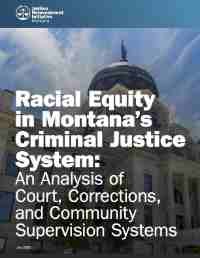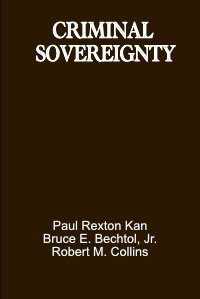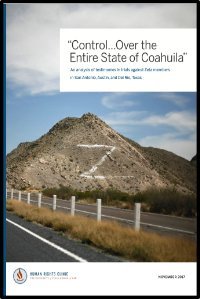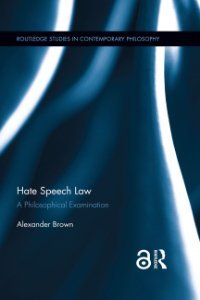Enjoy a peak behind the scenes of a great scholar. What did he read? What didn’t he publish? At what conferences did he make presentations? There are many treasures to be discovered. Better still, you can download any document and it’s yours forever.
A collection of all justice and equity related documents containing links to free open access documents from sources in Europe and around the world, issued by Hans J. Kerner via his monthly and special emails. We are gradually populating this collection reaching back to the inception of this valuable resource, around the year 2015.
NOTE: Some of the links to free books and chapters were, when posted on the Kerner Collection, time-limited by the publishers. There are, however, many precious items to be found.
Don M. Gottfredson Library of Criminal Justice. Criminal Justice Pathfinder, World Criminal Justice Library Network, and School of Criminal Justice. Rutgers University, Newark. The database consists of over 10,000 items ranging from pamphlets, booklets, research reports, commission reports and many others drawn from over twenty different countries. All items contain a brief summary of contents and a direct link to the item at its original source.
By Sarah W. Craun and Alyssa Purdy
There are numerous federal criminal statutes authorizing a sentence of life as the maximum sentence allowed, such as for offenses involving drug trafficking,1 racketeering, 2 and firearms 3 crimes. While convictions under these statutes are common,4 sentences of life imprisonment are rare, accounting for only a small proportion of all federal offenders sentenced during the last six fiscal years. During fiscal years 2016 through 2021, federal judges imposed a sentence of life imprisonment (“life imprisonment sentence”) on 709 offenders. Another 799 offenders received a sentence so long that it had the practical effect of a life sentence (i.e., 470 months or longer) (“de facto life sentence”). Together these two groups of offenders represent only 0.4 percent of the total federal offender population during the last six fiscal years. By comparison, other federally sentenced offenders during this time received a median sentence of imprisonment of 24 months. Due to the infrequency and nature of life imprisonment, such sentences are of heightened interest to policymakers. In February 2015, the United States Sentencing Commission released Life Sentences in the Federal System, examining the application of life sentences by federal courts during fiscal year 2013.5 Using data from fiscal years 2016 through 2021, this report updates and augments the Commission’s previous findings by examining the offenses that led to the life sentences imprisonment imposed, along with offender demographics, criminal histories, and victim-related adjustments
Washington, DC: United States Sentencing Commission , 2022. 40p.
By April A. Christine, Courtney R. Semisch, Charles S. Ray and Amanda Russell
This comprehensive study of robbery offenders sentenced in fiscal year 2021 provides an analysis of the characteristics of robbery offenders, their criminal history, and their sentences imposed. The report also provides analyses on the prevalence of robbery offenses and how they were committed, including who was robbed, what was taken, the use or threatened use of physical force, the use of a firearm or other dangerous weapon, and whether any victim was injured or killed during a robbery.
Washington, DC: The United States Sentencing Commission, 2022. 60p.
By Sara Bastomski, Matt Herman, Alison Martin and Sara Friedman
Between April 2021 and February 2022, The Council of State Governments (CSG) Justice Center conducted an analysis of racial equity across Montana’s criminal justice system in partnership with Montana judicial branch stakeholders. This work identified decision-making points in Montana’s criminal justice system in which there are disparities between American Indian and White people. Key findings include American Indian people are more likely to be incarcerated for felony criminal endangerment and public order offenses relative to comparable White people; American Indian people are incarcerated for longer than similarly situated White people; and American Indian people are more likely to be revoked from probation, conditional release, and parole than comparable White people. Based on these findings, the CSG Justice Center proposed five recommendations to improve racial equity in Montana’s criminal justice system.
New York: Council of State Governments (CSG) Justice Center, 2022. 49p.
By Rebekah Diller
Increasingly, states are turning to so-called “user fees” and surcharges to underwrite criminal justice costs and close budget gaps. In this report, we focus on Florida, a state that relies so heavily on fees to fund its courts that observers have coined a term for it – “cash register justice.” Since 1996, Florida added more than 20 new categories of financial obligations for criminal defendants and, at the same time, eliminated most exemptions for those who cannot pay. The fee increases have not been accompanied by any evident consideration of their hidden costs: the cumulative impacts on those required to pay, the ways in which the debt can lead to new offenses, and the costs to counties, clerks and courts of collection mechanisms that fail to exempt those unable to pay. This report examines the impact of the Florida Legislature’s decision to levy more user fees on persons accused and convicted of crimes, without providing exemptions for the indigent. Its conclusions are troubling. Florida relies heavily on fees to underwrite its criminal justice system and, at times, uses monies generated by fees to subsidize general revenue. In many cases, the debts are uncollectible; performance standards for court clerks, for example, expect that only 9 percent of fees levied in felony cases will be collected. Yet, aggressive collection practices result in a range of collateral consequences. Missed payments produce more fees. Unpaid costs prompt the suspension of driving privileges (and, relatedly, the ability to get to work).
New York: Brennan Center for Justice, 2019. 48p.
By Advancing Pretrial Policy and Research (APPR)
The pretrial system has, in recent years, become a focus of attention for governments, civil rights advocates, the media, and nonprofit organizations. Understandably so: it is the front door of the criminal legal system, and decisions made in the early stages of a criminal case have major impacts on everything that follows. As Berkeley law professor Caleb Foote wrote in 1956, “Pretrial decisions determine mostly everything.” This adage is true for individual cases: whether or not someone is detained while awaiting trial has major impacts on whether they are found guilty, whether they are sentenced to incarceration, and how long those sentences are.Unnecessary detention can also disrupt lives, leading to lost jobs and housing, family instability, and even increased likelihood of rearrest. It is also true for the system as a whole: virtually all of the growth in the U.S. jail population in the 21st century is attributable to pretrial incarceration. Housing people before trial costs county and state governments at least $14 billion annually. So, it is critical that we get pretrial decisions right. But in most of the country, the pretrial system is deeply flawed. There is an overreliance on custodial arrest instead of citations or summonses; release and detention are determined more by money than by judicial officers making intentional decisions about public safety or flight; defense counsel is not present, despite someone’s liberty being at stake; and pretrial services focus on monitoring rather than supporting people in the community. In addition, like the rest of the criminal legal system, the pretrial system suffers from systemic racism, with Black, Indigenous, and People of Color (BIPOC) disproportionately arrested and booked, subjected to higher financial conditions of release, and more frequently detained. These practices result in many people who could safely be released remaining in jail, often for long periods. And they do not enhance—and frequently undermine—community safety and well-being. Improving the pretrial system requires a comprehensive approach; we cannot focus on a single decision point or a single agency. And the problems will not be fixed with a single solution such as an actuarial assessment tool or even the abolishment of financial conditions. Rather, we need to look at the system as a whole, involve policymakers from all agencies, and engage the community meaningfully in the improvement process.
Silver Spring, MD: Advancing Pretrial Policy and Research (APPR) , 2022. 29p.
By John D. Ciorciari and Anne Heindel
More than thirty years after the fall of the Pol Pot regime, a UN-backed tribunal, fusing Cambodian and international law, procedure, and personnel, was established to try key Khmer Rouge officials for atrocities committed in the late 1970s. In this definitive scholarly treatment of the “Extraordinary Chambers in the Courts of Cambodia” (ECCC) from legal and political perspectives, John D. Ciorciari and Anne Heindel examine the ECCC’s institutional features, compare it to other hybrid and international criminal courts, evaluate its operations, and draw lessons for the future. Ciorciari and Heindel begin by discussing the political factors and historical contingencies that led the United Nations and Cambodian Government to create a hybrid tribunal with a number of unique features. Next, they examine the tribunal’s operations to date, focusing on how its institutional form has affected its various intended functions. They argue that many aspects of the ECCC’s judicial proceedings have been broadly consistent with international standards and that the Court’s in-country location has provided important benefits in terms of public outreach and victim participation. Nevertheless, the authors demonstrate that the ECCC’s complex, divided institutional structure and wrangling between national and international actors have slowed the proceedings, contributed to administrative irregularities, led to due process concerns, and jeopardized the Court’s public legitimacy and ability to leave a legacy of credible justice. Ciorciari and Heindel argue that the ECCC’s experiences reveal many of the challenges of managing a mass crimes process, especially in the context of a hybrid court. They conclude with recommendations on measures that can be taken to meet some of those challenges going forward.
Ann Arbor: University of Michigan Press, 2014. 462p.
By National Academies of Sciences, Engineering, and Medicine.
Recognizing the importance of eyewitness identifications in courts of law and motivated by data showing that at least one erroneous eyewitness identification was associated with almost 75% of cases where defendants were later exonerated by DNA evidence, in 2013 the Laura and John Arnold Foundation asked the National Academy of Sciences to undertake an assessment of the scientific research on eyewitness identification and offer recommendations to improve eyewitness performance. The appointed committee issued its report, Identifying the Culprit: Assessing Eyewitness Identification, in 2014.
In order to stimulate new and innovative research on statistical tools and the interrelationships between system and estimator variables, the Arnold Foundation in 2015 again called upon the National Academies. This report describes the development of the request for proposals, the processes followed by the committee as it evaluated the proposals, and the committee’s assessment of the scientific merit and research design of the proposals.
Washington, DC: The National Academies Press. 2016. 36p.
By Janice Deaton and Octavio Rodríguez Ferreira
This is one of a series of special reports that have been published on a semi-annual basis by Justice in Mexico since 2010, each of which examines issues related to crime and violence, judicial sector reform, and human rights in Mexico. This special report provides a detailed assessment of the use of arraigo as a prosecutorial mechanism in Mexico, as national and international organizations have increasingly questioned the practice. Evidence collected for this report suggests that detention without charge is a poor substitute for due process protections that help to ensure the integrity and legitimacy of police and prosecutorial investigations. This report was authored by Janice Deaton and Octavio Rodríguez Ferreira. The report was formally released on January 12, 2015 and was made possible by the generous support of the John D. and Catherine T. MacArthur Foundation. This report does not represent the views or opinions of the University of San Diego or the sponsoring and supporting organizations.
San Diego: Justice In Mexico, University of San Diego, 2015. 48p.
By Octavio Rodríguez Ferreira and David A. Shirk
This is one of a series of special reports that have been published on a semi-annual basis by Justice in Mexico since 2010 on issues related to crime and violence, judicial sector reform, and human rights in Mexico. This report examines Mexico’s progress toward implementation of the country’s "new” criminal justice system, which introduces the use of oral, adversarial proceedings and other measures to improve the handling of criminal cases in terms of efficiency, transparency, and fairness to the parties involved. This report is based on several months of research and data analysis, field observation, and active participation by the authors in the process of training law professors, law students, and attorneys in preparation for implementation of the reforms. The report provides a general background on the 2008 judicial reform initiative, and examines Mexican government efforts to implement the reforms at the federal, state, and judicial district level, relying on a unique dataset and maps generated by the Justice in Mexico program based at the University of San Diego. As an additional resource, this report also contains a translation of the 2008 constitutional changes underlying the reforms. Ultimately, the authors find that there has been significant progress toward the implementation of the new criminal justice system, and offer recommendations to assist the Mexican government and international aid organizations to help Mexico sustain this progress in the years to come. This report does not represent the views or opinions of the University of San Diego or the sponsoring and supporting organizations, and the authors are solely responsible for any errors, omissions, and opinions in the report.
San Diego: Justice in Mexico, University of San Diego, 2015. 53p.
By Nancy Cortes, Octavio Rodríguez Ferreira, and David A. Shirk
Survey of Judges, Prosecutors, and Public Defenders. The Justiciabarómetro (Justice Barometer) research initiative consists of a series of studies that evaluate the perceptions and professional development of Mexican-justice-sector personnel through large-scale surveys, focus groups and interviews, and the analysis of public policy to better understand the strength, challenges, and needs of the Mexican criminal justice system. Thus far, the Justiciabarómetro has surveyed over 8,000 municipal police in six municipalities in the Guadalajara Metropolitan Zone in 2009, in Ciudad Juárez in 2011, and Tijuana in 2014. Justice in Mexico has also surveyed nearly a thousand judges, prosecutors, and public defenders in 11 Mexican states through a 2010 study and in the 2016 follow up study summarized in this report.
San Diego: Justice in Mexico, University of San Diego, 2017. 54p.Survey of Judges, Prosecutors, and Public Defenders
By Anne Le Huérou
In April 2009, a police officer, D. Yevsyukov opened fire at people in a Moscow supermarket, killing two and wounding several others. In March 2012, a young man died in custody after being raped with a champagne bottle in a police station of the city of Kazan. Soon after, the police reform, passed in March 2011, was considered as a “failure” by the newly appointed Minister of Internal Affairs Vladimir Kolokoltsev. Those two cases of police violence, far from being exceptional, are almost a part of the routine – though not always with such deadly endings - in many police precincts in Russia and comprise a growing amount of the convictions against Russia at the ECHR. These two particular episodes can serve as landmarks for what I would like to develop in this contribution, for the first played a starting point for building-up police violence and deviance issues as a public matter that further helped and pushed the State to undertake a reform, under the presidency of D Medvedev, and the second led to a kind of acknowledgement that the task was too huge, at the very moment when the coming back of V Putin as the President was sending down the issue from the political agenda. In between, very diverse, vivid and sometimes at first glance paradoxical mobilizations against police violence, corruption and misbehavior have spread all over the country. Would they be NGOs helping victims of police violence to seek justice through court, provocative performances from art-groups or people taking arms against the police, these mobilizations
Paris: University of Paris, 2016. 20p.
Edited by Annie Barbara Chikwanha
In Africa, criminal justice systems remain rather fragile. This is not only because of the human rights practices of some African governments, but because the changes on the continent demand good governance and democracy. Criminal justice cannot be separated from democracy inasmuch as its effective implementation has become a barometer of democratic practices throughout the developed world. Africa`s deficiencies in the criminal justice system can benefit from a comprehensive scrutiny not just of the technical legal issues, but of the ethical issues too, as well as the dissection of international norms, institutions and criminal justice processes and their relevance for Africa. This monograph undoubtedly makes a significant contribution to the fledgling criminological writings on the African continent and all the articles reveal the challenges the criminal justice systems in Africa have to overcome in order to fulfill their commitments to international standards and norms.
Pretoria, South Africa: Institute of Security Studies, 2009. 124p.
By Linda Ross Meyer
Exactly how is it we think the ends of justice are accomplished by sentencing someone to a term in prison? How do we relate a quantitative measure of time—months and years—to the objectives of deterring crime, punishing wrongdoers, and accomplishing justice for those touched by a criminal act? Linda Ross Meyer investigates these questions, examining the disconnect between our two basic modes of thinking about time—chronologically (seconds, minutes, hours), or phenomenologically (observing, taking note of, or being aware of the passing of time). In Sentencing in Time, Meyer asks whether—in overlooking the irreconcilability of these two modes of thinking about time—we are failing to accomplish the ends we believe the criminal justice system is designed to serve. Drawing on work in philosophy, legal theory, jurisprudence, and the history of penology, Meyer explores how, rather than condemning prisoners to an experience of time bereft of meaning, we might instead make the experience of incarceration constructively meaningful—and thus better aligned with social objectives of deterring crime, reforming offenders, and restoring justice.
Amherst, MA: Amherst College Press, 2017. 118p.
By Cornelia Woll
Large companies are increasingly on trial. Over the last decade, many of the world’s biggest firms have been embroiled in legal disputes over corruption charges, financial fraud, environmental damage, taxation issues or sanction violations, ending in convictions or settlements of record-breaking fines, well above the billion-dollar mark. For critics of globalization, this turn towards corporate accountability is a welcome sea-change showing that multinational companies are no longer above the law. For legal experts, the trend is noteworthy because of the extraterritorial dimensions of law enforcement, as companies are increasingly held accountable for activities independent of their nationality or the place of the activities. Indeed, the global trend required understanding the evolution of corporate criminal law enforcement in the United States in particular, where authorities have skillfully expanded its effective jurisdiction beyond its territory. This paper traces the evolution of corporate prosecutions in the United States. Analyzing federal prosecution data, it then shows that foreign firms are more likely to pay a fine, which is on average 6,6 times larger.
Frankfurt a. M: Goethe University, Center for Advanced Studies on the Foundations of Law and Finance (LawFin), 2022. 38p.
By Paul Rexton Kan . Bruce E. Bechtol, Jr. and Robert M. Collins
North Koreas criminal conduct-smuggling, trafficking, and counterfeiting - is well known, but the organization directing it is understudied or overlooked. Policymakers, military leaders, and scholars may feel that they have a reasonable grasp on how and why North Korea is actively involved in criminal enterprises. However, unlike the other remaining communist states orphaned after the Cold War, or ordinary corrupt autocratic regimes, or criminally linked warlords and insurgent groups, North Korea practices a form of criminal sovereignty that is unique in the contemporary international security arena. North Korea uses state sovereignty to protect itself from external interference in its domestic affairs while dedicating a portion of its government to carrying out illicit international activities in defiance of international law and the domestic laws of numerous other nations. The proceeds of these activities are then used in a number of ways to sustain North Koreas existence and to enable other policies. For example, criminal proceeds are distributed to members of the North Korean elite including senior officers of the armed forces are used to support Kim Jong-ils personal life style and are invested in its military apparatus
Carlisle, PA: U.S. Army War College Press, 2010. 44p.
By Human Rights Clinic at the University of Texas School of Law.
The Human Rights Clinic at the University of Texas School of Law, in cooperation with the Centro Diocesano para los Derechos Humanos Fray Juan de Larios from Coahuila, Mexico, has compiled a report based on analyzed witness testimonies from three U.S. federal trials. Between 2013 and 2016, Zeta members were put on trial in Austin, San Antonio, and Del Rio for crimes of homicide, conspiracy to import drugs and weapons, and money laundering. These trials brought new information to light and corroborated information that has already been documented about Zeta operations and human rights abuses. First-hand testimonies of ex-Zeta cartel members and victims provide a more comprehensive understanding of the dire situation in Coahuila and offer a glimpse into the Zeta structure, members, and nexus with state officials and institutions. After reviewing the witness testimonies, the Clinic has determined two major findings: (1) the Zeta cartel committed numerous human rights abuses in Coahuila with impunity; (2) public institutions and officials played a role, by actions or omissions, in the commission of these abuses. Testimonies describe the nature and degree of Zeta influence over state and municipal officials and institutions. The Zetas paid bribes and integrated police officers into their hierarchy to ensure the cartel would be able to continue their illicit operations without resistance. However, the Zetas did not only influence low level state or municipal police; witnesses described a level of Zeta control which extended to city police chiefs, state and federal prosecutors, state prisons, sectors of the federal police and the Mexican army, and state politicians. Multiple witnesses described bribery payments of millions of dollars to Humberto Moreira and Ruben Moreira, the former and current governors of Coahuila, in exchange for complete control of the state. According to the testimonies, the Zetas’ influence over Coahuila government operations at all levels allowed them to conduct their business throughout the state with impunity and often with direct assistance from state officials and police officers. The report also documents the human rights abuses discussed in the witness testimonies, including the large-scale disappearances and killings in March and April of 2011, during what is known as the Piedras Negras and Allende Massacres. These crimes were perpetrated in response to information that three former Zeta operatives had begun to cooperate with U.S. authorities. In retaliation, the Zetas kidnapped, killed, and disappeared over 300 people who they believed to be associated with the former Zeta operatives
Austin, TX: University of Texas, Human Rights Clinic, 2017. 56p
By Alexander Brown.
A Philosophical Examination. Hate speech law can be found throughout the world. But it is also the subject of numerous principled arguments, both for and against. These principles invoke a host of morally relevant features (e.g., liberty, health, autonomy, security, non-subordination, the absence of oppression, human dignity, the discovery of truth, the acquisition of knowledge, self-realization, human excellence, civic dignity, cultural diversity and choice, recognition of cultural identity, intercultural dialogue, participation in democratic self-government, being subject only to legitimate rule) and practical considerations (e.g., efficacy, the least restrictive alternative, chilling effects). The book develops and then critically examines these various principled arguments. It also attempts to de-homogenize hate speech law into different clusters of laws/regulations/codes that constrain uses of hate speech, so as to facilitate a more nuanced examination of the principled arguments.
New York; London: Routledge, 2015. 379p.





















